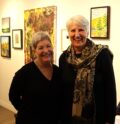Commentary
A new face for our currency
December 15, 2016
By Tony Pearson
There’s a new face scheduled to grace the front of Canada’s $10 bill soon — and it belongs to a black woman.
Viola Desmond was an African-Canadian, born in Halifax. There has been a black community in Nova Scotia for over 200 years; they were among the original “Loyalists” who left the United States after it separated from Britain. Most were free, although some were slaves of white Loyalists.
The black Loyalists who settled in Nova Scotia received smaller land grants, and were grouped in all-black settlements. It should thus come as no surprise that Nova Scotia institution and businesses practised “Jim Crow” discrimination into the 20th century.
Viola Desmond was an entrepreneur, who ran a beauty parlour and a beautician school (since black women couldn’t get into white-only beauty training). While on a business trip in 1946, her car broke down, and she had to wait for parts. She decided to take in a movie. As her eyesight wasn’t great, she wanted a seat reasonably close to the screen. However, the New Glasgow movie house had a strict policy – no blacks downstairs, only in the balcony. When Desmond refused to comply with this racist policy, she was arrested, held in jail, and fined.
Although she lost the subsequent court case on a technicality, her actions led to the formation of the Nova Scotia Association for the Advancement of Coloured People. Segregation was finally banned in Nova Scotia in 1954.
It would be nice to think that Canada has been largely free from racism. Unfortunately it hasn’t — and it still isn’t. In the 20th century, Canada discriminated against Chinese, Japanese, South Asian, and black immigrants. During the World Wars, when we were allegedly fighting for freedom, we actively persecuted Eastern Europeans (the First World War) and actually jailed and deported Japanese-Canadians (the Second World War) solely on ethnic grounds. We discouraged entire groups, like Chinese- and African-Canadians, from joining our armed forces. And of course throughout this period, we practised massive discrimination against Aboriginal Peoples, mostly notably through the horror of residential schools.
Now we’re in a new century, and racism is still all too prevalent. In the last election campaign, we saw the Harper Conservatives trying to win votes by appealing to “old stock” Canadians (code for white people). Current Conservative leadership contender Kellie Leitch, who urged people to report “barbaric” immigrant practices, is still pushing this line, calling for a “test of Canadian values” for new immigrant applicants.
The election by our southern neighbour of an openly bigoted president supported by the “alt-right” (read “white nationalists”) has unleashed a new wave of racism, which has already spread to Canada. In Ottawa, three synagogues and a mosque have been spray-painted with swastikas. Women wearing hijabs, the traditional Muslim head scarf, have been attacked on Toronto buses. In Vancouver, flyers have showed up in the mail urging white people to take their city back from Chinese immigrants.
In addition, lots of people are still up in arms about taking in more Syrian refugees.
Then there’s carding or racial profiling. What this means is that if your skin isn’t totally white, you’re far more likely to be stopped on the street or in your car by police for no valid reason, or shadowed around a store on the assumption that you’re a thief.
But perhaps the greatest demonstration of unequal treatment was profiled last year in Maclean’s Magazine. It showed that when compared to African-Americans in the U.S., native Canadians fared worse on just about every socio-economic measure — from family income and unemployment to infant mortality, school drop-out, and incarceration rates — when compared to the rest of the population.
On the positive side, we have remedied many of our past offences. As a high school teacher for over 20 years, I observed an ever-growing commitment to multi-culturalism among young people. Another healthy sign is the growing number of inter-racial marriages; they’ve doubled in the past couple of decades; one in 10 couples in British Columbia are now interracial. On the other hand, 80 per cent of British Columbians of Asian origin report that they have experienced racial prejudice.
Officially, according to our constitution, Canada is a bilingual, multi-cultural country. Diversity has become one of our strengths — certainly economically, where we have benefited immensely from the entrepreneurship of those who immigrated here in search of opportunity.
But we have to be careful. We cannot allow ourselves to become complacent, and take the statement for the full reality. The Trump wave of hate must be contained at the border.
The inclusion of Viola Desmond on our currency should therefore act as a double reminder — of both the tainted past from which we have emerged, and of the need to strengthen action to reduce current aspects of racism.

















